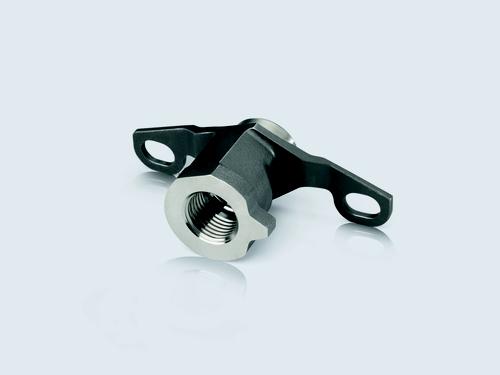UL is partnering with metals additive manufacturing (AM) supplier EOS to provide AM training to EOS's customers. It's designed to promote correct usage of AM technologies by OEMs and others in manufacturing.
April 27, 2016
UL (Underwriters Laboratories) is partnering with metals additive manufacturing (AM) supplier EOS to provide AM training to EOS's customers. The training will include some specific to EOS's machines and technology, and some from UL's own existing curriculum. Like UL's training partnership with the Society of Plastics Engineers (SPE), this agreement will help promote correct usage of AM technologies by OEMs and others in manufacturing.
This is UL's first collaboration with an AM supplier, and the company is open to similar partnerships with others, the strategy and innovation director for its Digital Manufacturing Technologies division, Chris Krampitz, told Design News. The memorandum of understanding, signed by Germany-based EOS and UL, includes joint training, conformity advisory services, and facility safety management. Training will be offered to customers already using the technology, or planning on using it in the near future.

Final production, 3D-printed borescope bosses like this one, made by German engine maker MTU Aero Engines for Pratt & Whitney's PurePower PW1100G-JM jet engine, are made using EOS's DMLS (direct metal laser sintering) technology. UL is training EOS customers to help promote correct usage of AM technologies by manufacturers for end-production parts.
(Source: MTU Aero Engines)
UL is focusing on AM technologies that can be used for production, not prototyping, and metals AM is currently a top priority. "In 12 to 18 months polymer composites will also be of great interest for production parts," said Krampitz. "A third materials priority will be ceramics for electrical and electronics applications." EOS has technologies that produce parts in all three materials classes, and its metals AM production machines have been widely adopted by manufacturers globally. The company is seen by many as a leader in metals AM especially for high-end aerospace and medical products.
Some of the training will consist of UL's existing three-tier curriculum, some will be specific to EOS's machines/technology, and some will be specific to industries such as aerospace and medical that have products requiring safety certification. Conformity advisory services are what UL already offers to manufacturers, said Krampitz. These include testing and inspection protocols, plus training plans across their organizations to meet regulatory and industry standards, or by their customers. UL's facility safety management program is geared to help adopters of the technology assure that their facilities are set up to meet the needs of the new technology, as well as industry standards, and safety procedures such as how materials are disposed of.
UL is open to similar programs with other 3D printing/AM manufacturers, as well as software companies, materials manufacturers, trade organizations, and non-profits. For example, the partnership with SPE gives SPE members discounts on UL's training courses and related content. UL is also sponsoring new members who are interested in this training by paying their SPE dues.
READ MORE ARTICLES ON 3D PRINTING:
Other organizations such as the ISO, ASTM, and America Makes are working on broader standards development. UL will partner and work with them, but in more of a support role, said Krampitz. Each separate industry that wants to use AM will need its own set of standards, such as automotive, aerospace, and medical, and it will take several years to create standards for all of them. "Meanwhile, manufacturers want to use the technology now," said Krampitz. "So we work with them to develop their own internal standards and operating procedures, which are aligned with the roadmaps for longer-term standards."
UL wants to avoid what happened in the shift from ISO-9001 to AS-9100 in aerospace a few years ago. "ISO-9001 wasn't sufficient anymore, so each aerospace company developed its own internal standards," said Krampitz. "This resulted in incompatibilities and a confused supply chain, plus it drove costs up." Eventually, all the aerospace companies came together to harmonize their individual standards, which resulted in AS-9100, but it took three years to sort everything out.
Find out more about UL's training curriculum here.
Ann R. Thryft is senior technical editor, materials & assembly, for Design News. She's been writing about manufacturing- and electronics-related technologies for 28 years, covering manufacturing materials & processes, alternative energy, and robotics. In the past, she's also written about machine vision and all kinds of communications.
About the Author(s)
You May Also Like



